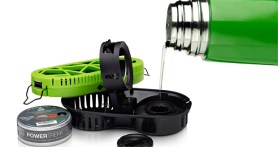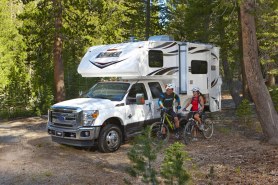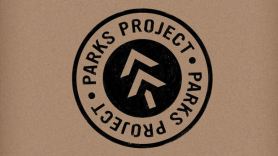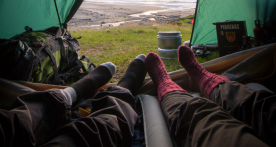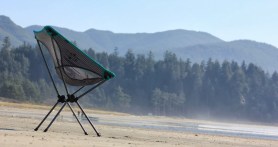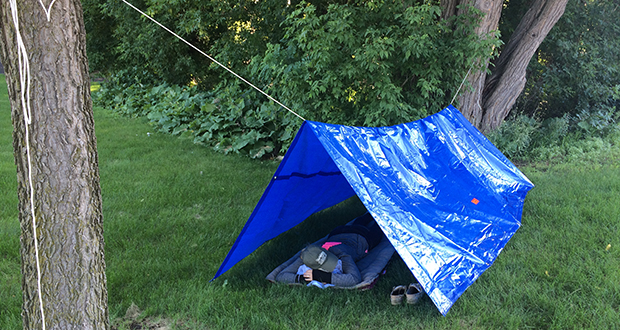

Sometimes the simplest and least expensive piece of gear can be the most useful; for example, the plain blue tarp from the hardware store. It’s a downright camping essential because it’s so versatile.
Videos by Outdoors with Bear Grylls
Chances are good you’ll find dozens of uses for, but here are 5 great uses for a blue tarp that every camper should know:
1. Emergency Tent
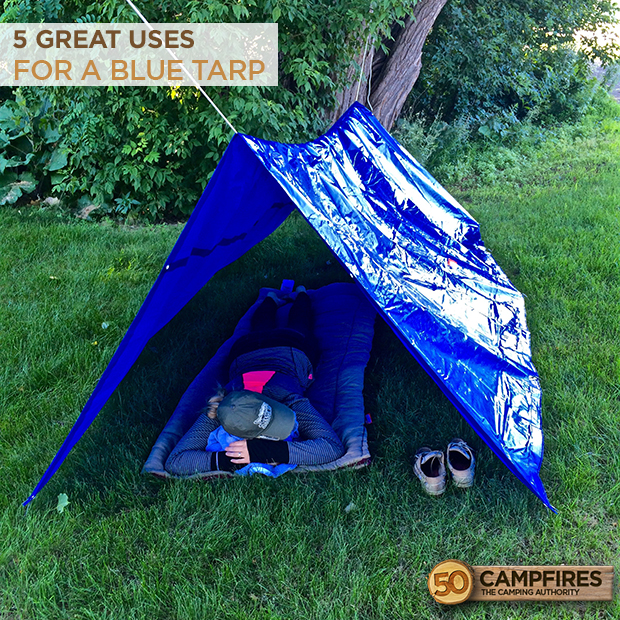
Drape the tarp over a rope stretched between two trees and weight or stake the edges on the ground and you have a shelter that will do a fair job of keeping the rain off. Better is if you have a large enough tarp to make a triangular tube tent you can crawl into with a layer of protection from the ground. Just be sure to keep the edge outside of the floor (opposite of the shower curtain on a bathtub) so you don’t end up channeling all the rain on to the tent floor.
2. Lean-to, Windbreak, Heat Reflector, Sunshade
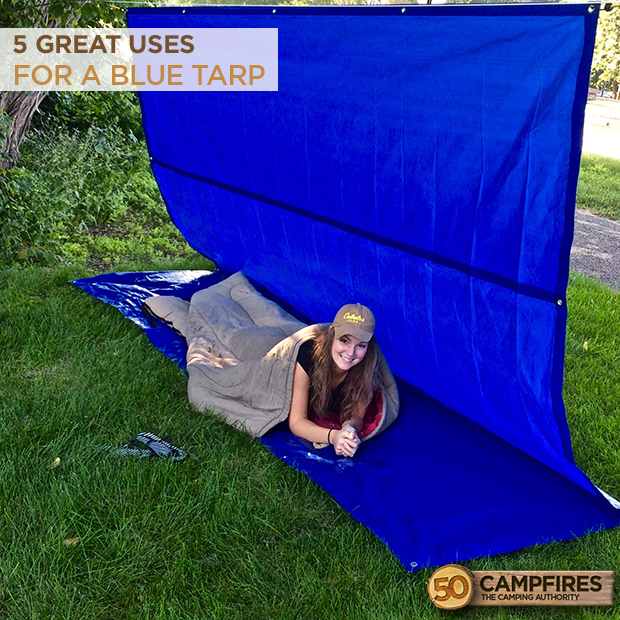
Sometimes a one-sided lean-to is a better shelter option. It’s easy and fast to construct, provides a floor with a smaller tarp, and can be positioned in relation to the campfire to reflect heat down on to you far better than a tent can. Lean-tos are not only “emergency” shelters, they’re the best for a real sleeping under the stars experience. During the day, a lean-to can be positioned to keep you shaded from the scorching sun and take advantage of any breeze there might be.
3. Sleeping Bag Wrap
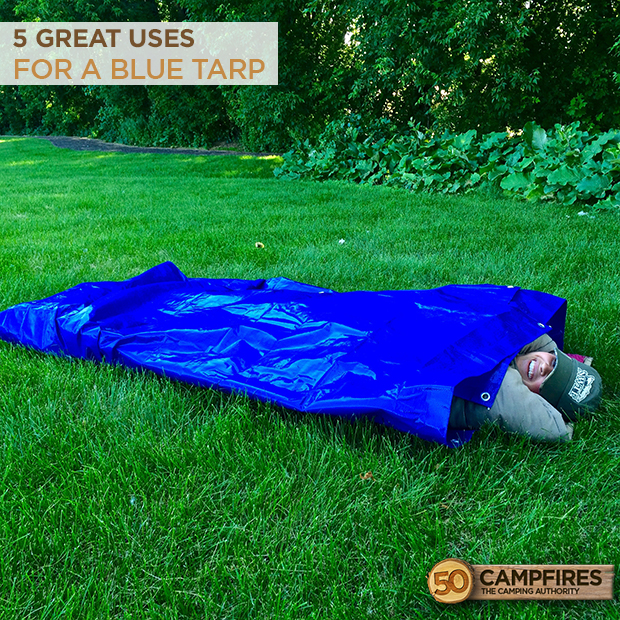
Though a bit crunchy for optimal sleep, a tarp can serve as an extra blanket wrapped around your sleeping bag particularly if you’re in a leaky tent or sleeping outside. At least it will keep your bag from getting wet from the outside. However, if it’s warm and you sweat, the tarp will prevent the perspiration from wicking out to evaporate.
4. Ground Cloth
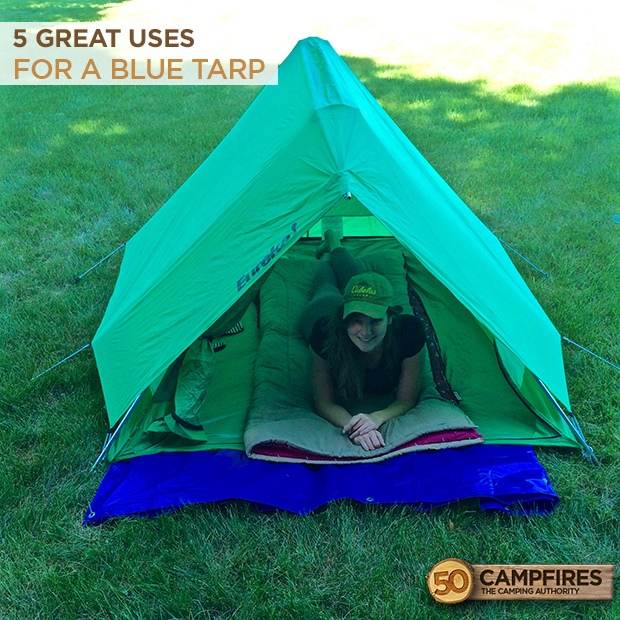
Lay down a tarp before putting up your tent. It provides an extra layer of protection from moisture coming up from the ground and helps keep your tent cleaner and in better shape. Fold the tarp to ensure it’s the same size or slightly smaller than the tent’s footprint so that the tarp can’t catch rain and direct it under the tent.
5. Rain Poncho
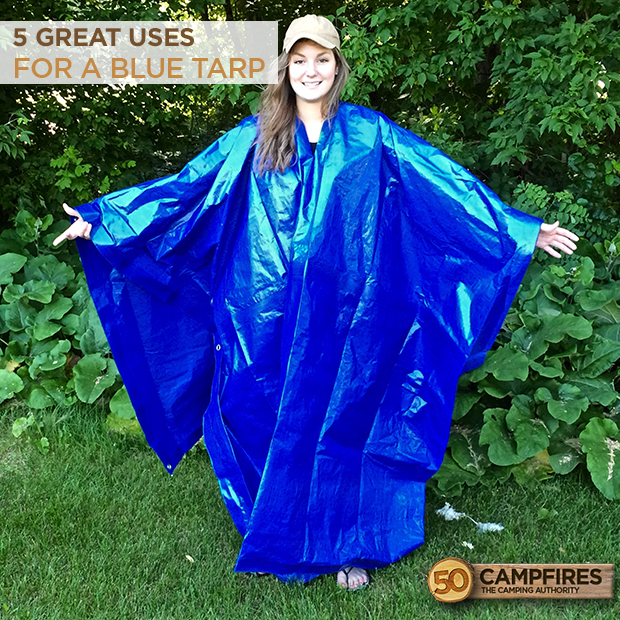
If you get caught somewhere without your rain gear, a tarp and a little creative cutting with your trusty knife can make a dandy makeshift rain poncho. For many, the go-to is punching a few holes in a large, heavy-duty garbage bag, but a tarp poncho keeps your arms drier while still providing mobility. Plus, the garbage bag raincoat is a one-time proposition; a tarp poncho is far more durable, especially if you’re traveling through the woods.


